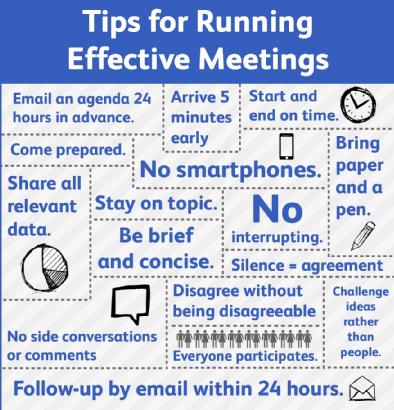In an ever-evolving workspace that thrives on collaboration and communication, the ability to conduct effective meetings has become paramount. Have you ever walked into a meeting with a seemingly straightforward agenda, only to emerge feeling more confused than motivated? You’re not alone! A staggering number of professionals report that they frequently leave meetings feeling unproductive. So, how do we flip the script and transform these gatherings into powerful tools for progress? Here are 15 tips for running effective meetings that will not only keep your team engaged but also drive meaningful outcomes.
1. Establish a Clear Purpose
Before scheduling a meeting, ponder the primary objective. Is it to brainstorm ideas, make decisions, or provide status updates? Clearly defining the purpose helps everyone stay focused and ensures that time is not squandered navigating tangential discussions.
2. Craft a Concise Agenda
An effective meeting begins with a well-crafted agenda circulated in advance. This document should highlight key topics, allocate time for each, and outline desired outcomes. A shared agenda sets expectations and cultivates accountability among participants.
3. Limit the Attendee List
It might be tempting to invite everyone for input, but too many voices can muddle the discussion. Choose participants who are directly relevant to the topics at hand. Consider: Who is necessary for making decisions? Who can provide insights? Keep the circle small to enhance engagement and efficiency.
4. Designate a Meeting Leader
A defined facilitator is vital for steering the meeting towards its objectives. This individual should confidently navigate discussions, ensure everyone has a voice, and actively manage time. A competent leader keeps the atmosphere productive and engaging.
5. Foster a Collaborative Environment
Encourage an atmosphere where everyone feels comfortable sharing their ideas. This can be achieved by setting ground rules at the onset: listen respectfully, build on others’ ideas, and refrain from interruptions. A collaborative environment fosters creativity and innovation.
6. Utilize Technology Wisely
Whether in-person or virtual, technology can be a formidable ally or a distracting foe. Utilize tools like video conferencing, screen sharing, and collaborative documents effectively. Test all technology beforehand to prevent hiccups that can derail productivity.
7. Encourage Participation
Every participant should feel empowered to contribute. Ask open-ended questions, and invite quiet members to share their thoughts. Consider using round-robin techniques or brainstorming sessions to incorporate diverse perspectives and ideas, ensuring that all voices are heard.
8. Maintain a Fast Pace
Time is finite, and there’s no reason to allow discussions to linger unnecessarily. Encourage brevity by setting time limits for each agenda item. Use a timer if necessary. By maintaining a brisk pace, you keep attention levels high and discussions focused.
9. Avoid Multitasking
In today’s digital age, it can be tempting to juggle multiple tasks during meetings, but this dilutes focus. Encourage all participants to remain present and engaged, turning off distractions such as mobile phones and email notifications. A collective commitment to attentiveness can significantly enhance meeting efficacy.
10. Summarize Key Takeaways
As the meeting draws to a close, take a moment to summarize the main points discussed and the action items agreed upon. This ensures clarity and accountability, preventing any ambiguity in post-meeting responsibilities.
11. Allocate Action Items Wisely
Assign specific tasks to individuals along with deadlines to ensure follow-through. Be explicit about what is expected and who is accountable. This structured approach transforms discussions into actionable plans, propelling projects forward.
12. Solicit Feedback Post-Meeting
After the meeting, gather feedback from participants regarding what worked and what could be improved. This practice not only demonstrates that you value their input, but it also helps refine your meeting strategies over time, making them more effective.
13. Follow Up Regularly
Consistency is key! Following up on action items and commitments can emphasize accountability and commitment to the goals set during the meeting. Regular updates can help keep momentum alive and track progress toward objectives.
14. Embrace Constructive Conflict
Disagreement doesn’t inherently mean dysfunction. Healthy debate can lead to innovative solutions. Encourage respectful conflict by framing discussions as opportunities for growth and improvement. This intersection of ideas often yields the most creative outcomes.
15. Think Outside the Boardroom
Sometimes, the best ideas arise outside the traditional settings. Consider setting up meetings in less conventional spaces that spur creativity and relaxation, like parks or cafes. Extending the invitation to a walking meeting can stimulate the mind while keeping participants engaged.
As we wrap up these tips, imagine how much more productive your team meetings can become. Will you accept the challenge of implementing these strategies? By refining your approach to meetings, you can transform them into powerful avenues for collaboration and innovation, leaving boredom behind for a more dynamic and engaging experience.
